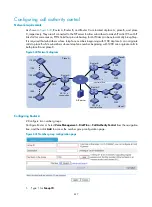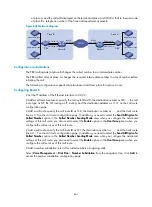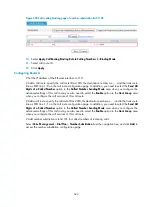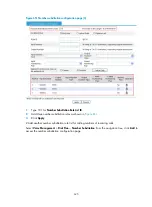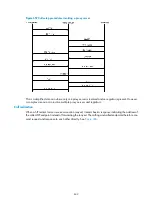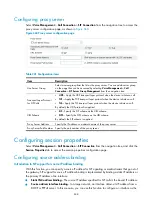
630
•
Consistent communication method. Management becomes easier as the result of consistency in
dialup mode and system access method used by branches, SOHOs, and traveling personnel.
•
Quick launch. The system can be updated quickly to accommodate new branches and personnel,
and changes resulting from job rotation or relocation.
•
Easy to install and maintain. Nonprofessional individuals can install and maintain SIP systems.
SIP messages
SIP messages, including SIP request messages and SIP response messages, are encoded in text mode.
SIP request messages include INVITE, ACK, OPTIONS, BYE, CANCEL, and REGISTER. RFC 3261 defines
the following six request messages:
•
INVITE
—Used to invite a user to join a call.
•
ACK
—Used to acknowledge the response to a request.
•
OPTIONS
—Used to query for the capabilities.
•
BYE
—Used to release an established call.
•
CANCEL
—Used to give up a call attempt.
•
REGISTER
—Used to register with the SIP registrar.
SIP response messages, used to respond to SIP requests, indicate the status of a call or registration,
succeeded or failed. Response messages are distinguished by status codes. Each status code is a 3-digit
integer, where the first digit defines the class of a response, and the last two digits describe the response
message in more detail.
Table 237
Status codes of response messages
Code Description Class
100–199
Request is received and is being processed.
Provisional
200–299
Request is successfully received, understood, and accepted.
Success
300–399
Further action needs to be taken to process the request.
Redirection
400–499
Request contains bad syntax, and therefore cannot be processed.
Client error
500–599
Request cannot be processed due to UAS or server error.
Server error
600–699
Request cannot be processed by any UAS or server.
Global error
SIP fundamentals
Registration
In a complete SIP system, all SIP endpoints working as UAs should register with SIP registrars, providing
information such as location, session capabilities, and call policy.
Typically, a SIP UA sends its registrar a REGISTER request at startup or in response to an administratively
registration operation, carrying all the information that must be recorded. Upon receipt of the request, the
registrar sends back a response notifying receipt of the request, and a
200 OK
(SUCCESS) message if
the registration is accepted. The following figure shows the message exchange.
Summary of Contents for MSR SERIES
Page 17: ...xv Documents 835 Websites 835 Conventions 836 Index 838 ...
Page 20: ...3 Figure 3 Initial page of the Web interface ...
Page 42: ...25 Figure 13 Firefox Web browser setting ...
Page 59: ...42 Figure 27 Checking the basic service configuration ...
Page 73: ...56 Figure 35 Sample interface statistics ...
Page 156: ...139 Figure 139 Rebooting the 3G modem ...
Page 168: ...151 Figure 152 Configuring Web server 2 ...
Page 174: ...157 Figure 158 Configure the URL filtering function ...
Page 242: ...225 Figure 233 Enabling the DHCP client on interface Ethernet 0 1 ...
Page 247: ...230 Figure 236 The page for configuring an advanced IPv4 ACL ...
Page 255: ...238 Figure 241 Advanced limit setting ...
Page 298: ...281 e Click Apply 2 Configure Router B in the same way Router A is configured ...
Page 400: ...383 Figure 387 Verifying the configuration ...
Page 405: ...388 ...
Page 523: ...506 Figure 530 Ping configuration page ...
Page 775: ...758 Figure 785 Configuring a jump node ...


